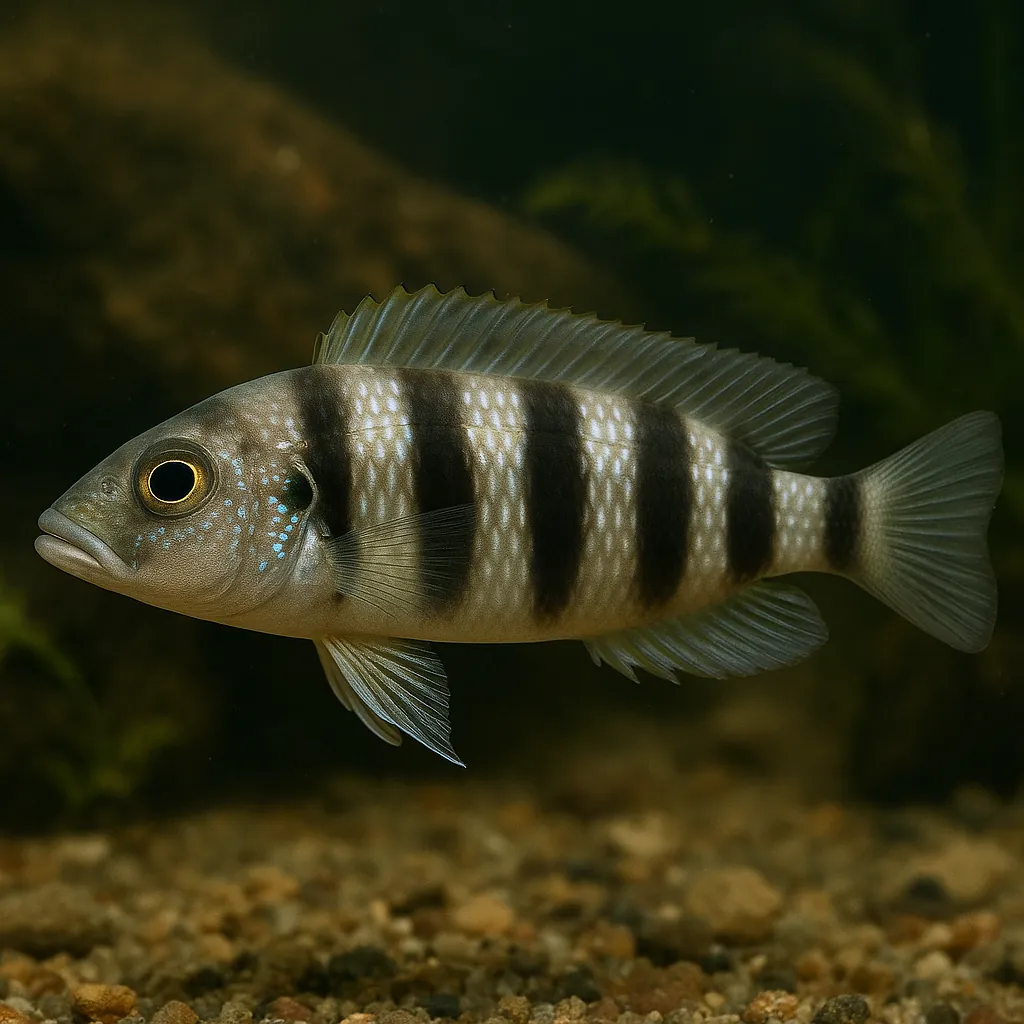
Six-bar lamprologus
Introduction
The Six-bar Lamprologus (Neolamprologus sexfasciatus) is a striking cichlid species native to Lake Tanganyika in Africa. Renowned for its six distinct vertical bars adorning a golden-yellow body, this fish captivates aquarists with its vibrant appearance and dynamic behavior. While its territorial nature and specific care requirements may pose challenges, dedicated hobbyists find the Six-bar Lamprologus a rewarding addition to their aquariums.
Care and Environment
Providing optimal care for the Six-bar Lamprologus involves replicating its natural habitat and addressing its specific needs.
What is the minimum tank size for a Six-bar Lamprologus?
A minimum tank size of 200 liters is recommended to accommodate a single pair, allowing sufficient space for territory establishment and movement.
What are the ideal water parameters for this species?
Maintain a temperature between 23°C and 25°C, a pH range of 7.8 to 8.8, and water hardness between 8 to 25 dGH to mimic the hard, alkaline waters of Lake Tanganyika.
How should the tank be set up to suit the Six-bar Lamprologus?
Incorporate a sandy substrate with ample rock formations and caves to provide hiding spots and territorial boundaries, reducing aggression and stress.
Filtration should be robust to handle the biological load, and moderate lighting is sufficient. Feed a varied diet of high-quality cichlid pellets, flakes, and live or frozen foods like bloodworms and brine shrimp to maintain health and coloration. Be mindful of their territorial and aggressive tendencies, especially during breeding, and ensure the tank is spacious enough to prevent conflicts.
Origin and Habitat
The Six-bar Lamprologus is endemic to the southern half of Lake Tanganyika in East Africa. This vast lake is characterized by its hard, alkaline waters and rocky shorelines, providing numerous crevices and caves that serve as natural shelters and breeding sites for these cichlids. They are typically found in rocky areas and may also inhabit shallow waters near the lake's edge.
Temperament and Compatibility
Known for their territorial and moderately aggressive nature, Six-bar Lamprologus can be challenging to house with other fish.
Can Six-bar Lamprologus be kept with other fish?
Yes, but tank mates should be chosen carefully. Suitable companions include other similarly sized and temperamentally compatible cichlids, such as certain Neolamprologus species, Julidochromis, and Altolamprologus. Avoid housing them with smaller or more passive fish to prevent bullying.
Is it advisable to keep multiple Six-bar Lamprologus together?
Keeping multiple individuals can lead to increased aggression unless the tank is large enough to provide each fish with its own territory. A spacious tank with plenty of hiding spots can help mitigate conflicts.
To create a harmonious tank community, ensure ample space and carefully select tank mates that can coexist with the Six-bar Lamprologus's assertive behavior.
Interesting Facts
The Six-bar Lamprologus exhibits fascinating behaviors and traits that intrigue aquarists.
How does the Six-bar Lamprologus reproduce?
They are cave spawners, with pairs selecting secluded spots to lay eggs. Both parents actively guard the eggs and fry, showcasing strong parental instincts.
What is unique about their feeding habits?
In the wild, their diet primarily consists of small invertebrates and crustaceans. Their pharyngeal bones and teeth are adapted to handle hard-shelled prey, such as snails.
Additionally, an aggressive mimic, Plecodus straeleni, resembles the Six-bar Lamprologus to approach unsuspecting victims, highlighting the complex interactions within their natural ecosystem.
Sources
All information in this article has been gathered from the following reputable sources:
Overview
Recommended Tank Size 105.7 Gallons (for groups of 6 or more) |
Minimum Group Size 2 |
Minimum Tank Volume 52.8 Gallons |
Maximum Adult Length 5.9 inches |
Average Adult Length 5 inches |
Shoaling (6+ required) No |
Preferred Water Type Hard, alkaline freshwater |
Temperature Range (°C) 23-25 |
pH Range 7.8-8.8 |
Water Hardness (dGH) 8-25 |
Typical Lifespan (years) 8 years |